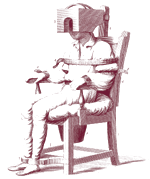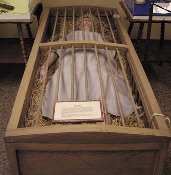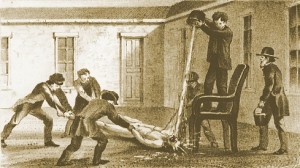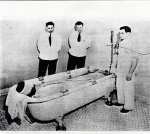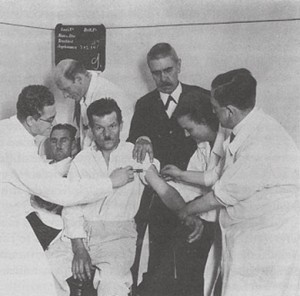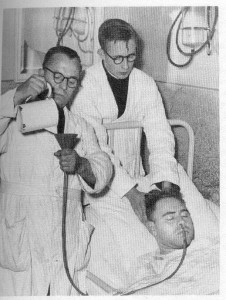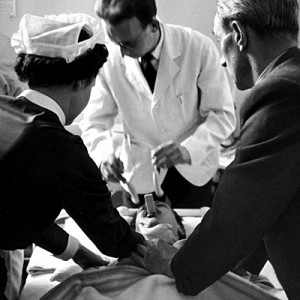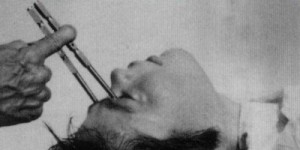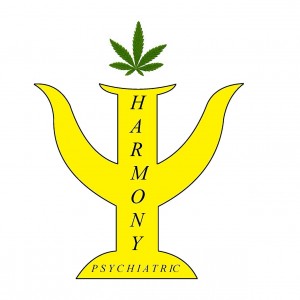The mid 1700’s saw a population boom in what would soon become the United States.
A growing number of “lunaticks” wandering the streets caught the attention of Benjamin Franklin and Dr. Thomas Bond, and in 1753 the Pennsylvania Hospital began “treating” these “lunaticks”.
Patients were chained to walls in the basement where they were shaved, blistered, bled, purged, whipped, twirled, beaten and displayed for public amusement.
30 years later, Benjamin Rush, the “father of American Psychiatry” moved the patients out of the basement, banned their use as a freak show and replaced their chains with his own invention, the tranquilizing chair. Unfortunately, sitting upright all day and night proved somewhat uncomfortable.
http://www.uphs.upenn.edu/paharc/features/brush.html
The Utica crib became popular in the 1840’s, unlike the tranquilizing chair it allowed patients to relax in a more comfortable supine position but failed to offer to the control of full limb restraints.
http://www.behavioral.net/article/confronting-chaos?page=4
Modern day restraint beds combine the supine comfort of the crib with the limb restraining security of the tranquilizing chair to provide maximum control over a patient. Unfortunately, instances of patients being raped while in restraints have been reported.
http://www.handcuffwarehouse.com/posey.html
Early psychiatric cures focused on torturing evil spirits and demons out of those afflicted with psychiatric illness.
Early “treatments” included beatings, bleedings, water tortures and trepanation.
The “Age of Enlightenment” brought about significant changes to the World of Psychiatry and older methods of providing psychiatric care were largely replaced by the “shock” therapies of the 19’th and 20th centuries.
Hydrotherapy lasted hours and could involve either cold or hot water to induce either hypothermia or hyperthermia.
Thermal Shock was used to cook mental illness out of the patient.
http://www.cbsnews.com/pictures/19th-and-20th-century-psychiatry-22-rare-photos/21/
Fever induced by Malarial therapy was also used to burn mental illness out of the patient. Fortunately, not everybody died from this and it may have actually helped a few patients with syphilis.
https://www.mja.com.au/journal/2011/195/8/fever-and-antipyresis-infection
Insulin shock involved inducing a coma with an overdose of insulin and then trying to revive the patient with glucose poured into a tube inserted into the stomach. This turned out to be a great way to kill people but it wasn’t very therapeutic.
http://www.priory.com/homol/insulin.htm
Electro Convulsive Therapy is the most familiar of the “shock therapies” and is the only “shock therapy” that proved somewhat effective for some patients. It is still used today and it generates huge revenues for hospitals and providers. It often causes significant memory loss but at least people may forget why they were depressed.
http://www.health.com/health/gallery/0,,20460332,00.html
Icepick lobotomies became popular from the late 1930’s through the 1960’s. These procedures often resulted in death or in becoming an institutionalized vegetable.
http://www.cracked.com/article_15669_the-10-most-insane-medical-practices-in-history.html
The 1950s heralded a new age for psychiatry with the development of:
-chlorpromazine for psychoses
-tricyclics and monoamine oxidase inhibitors for depression
-lithium carbonate for mania
-benzodiazepines for anxiety
This was the last significant change in psychiatry. We still target the same neurotransmitter systems and the same agonists as we did in the 1950’s. Psychiatry has ignored the last quarter century of neurobiological research and remains mired in the past.

